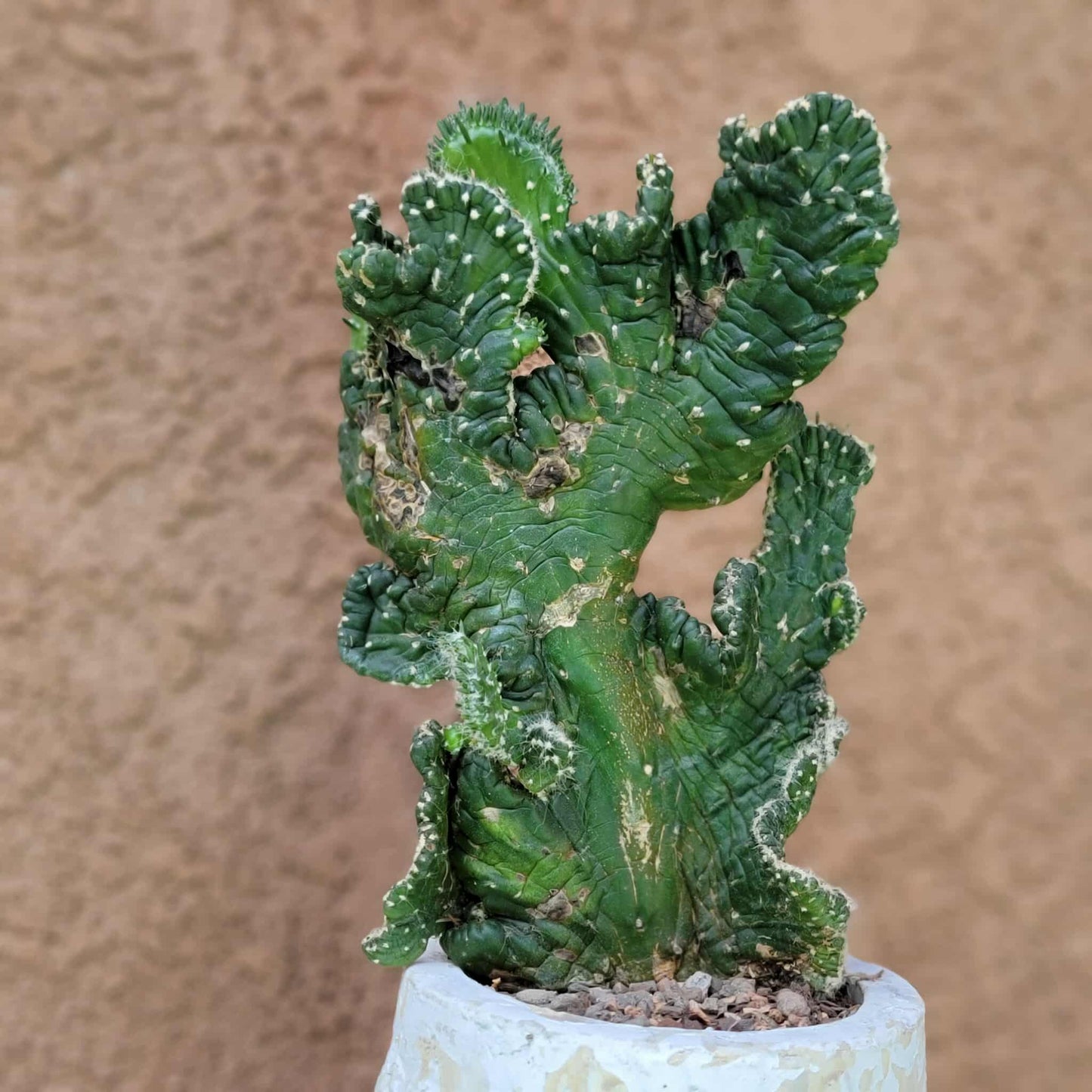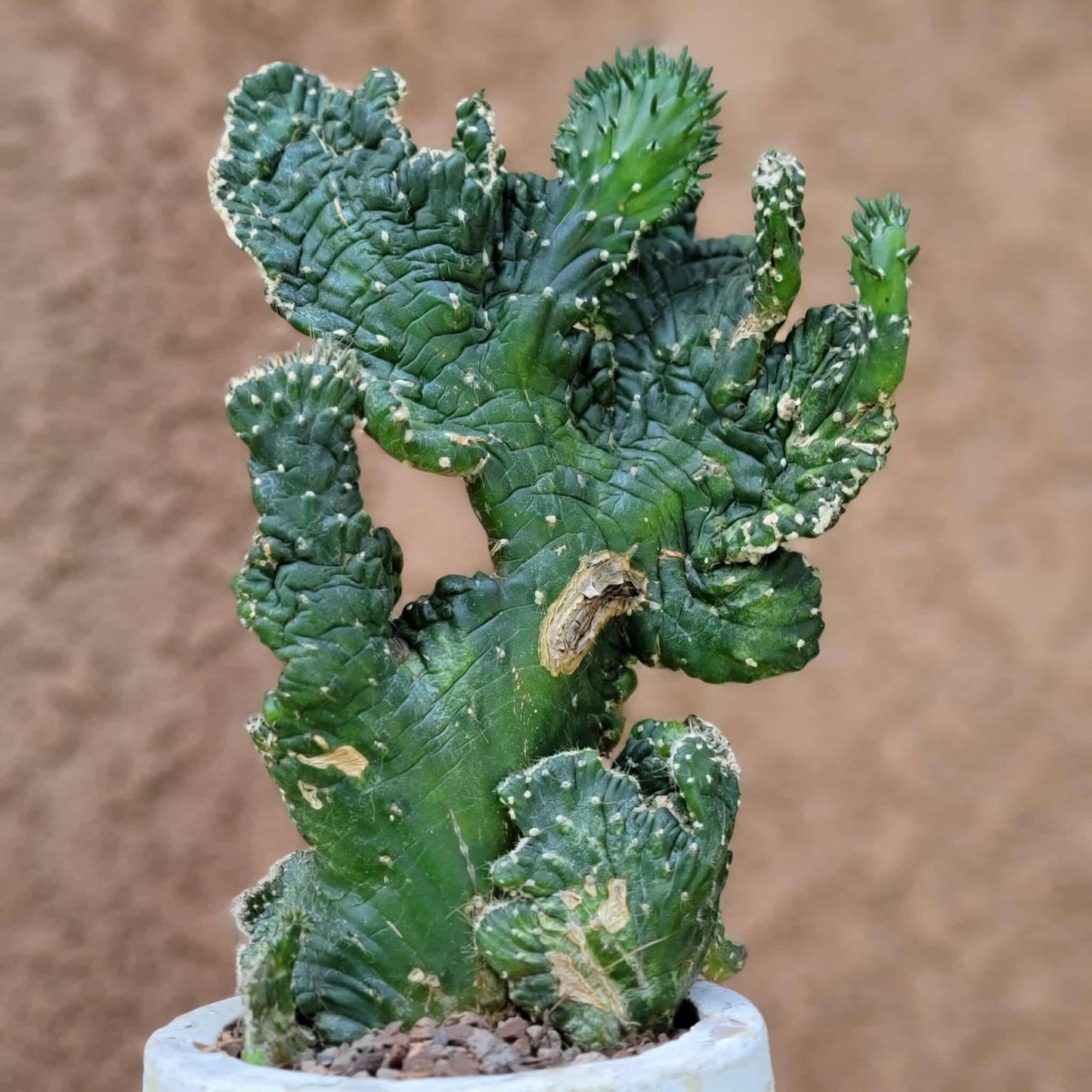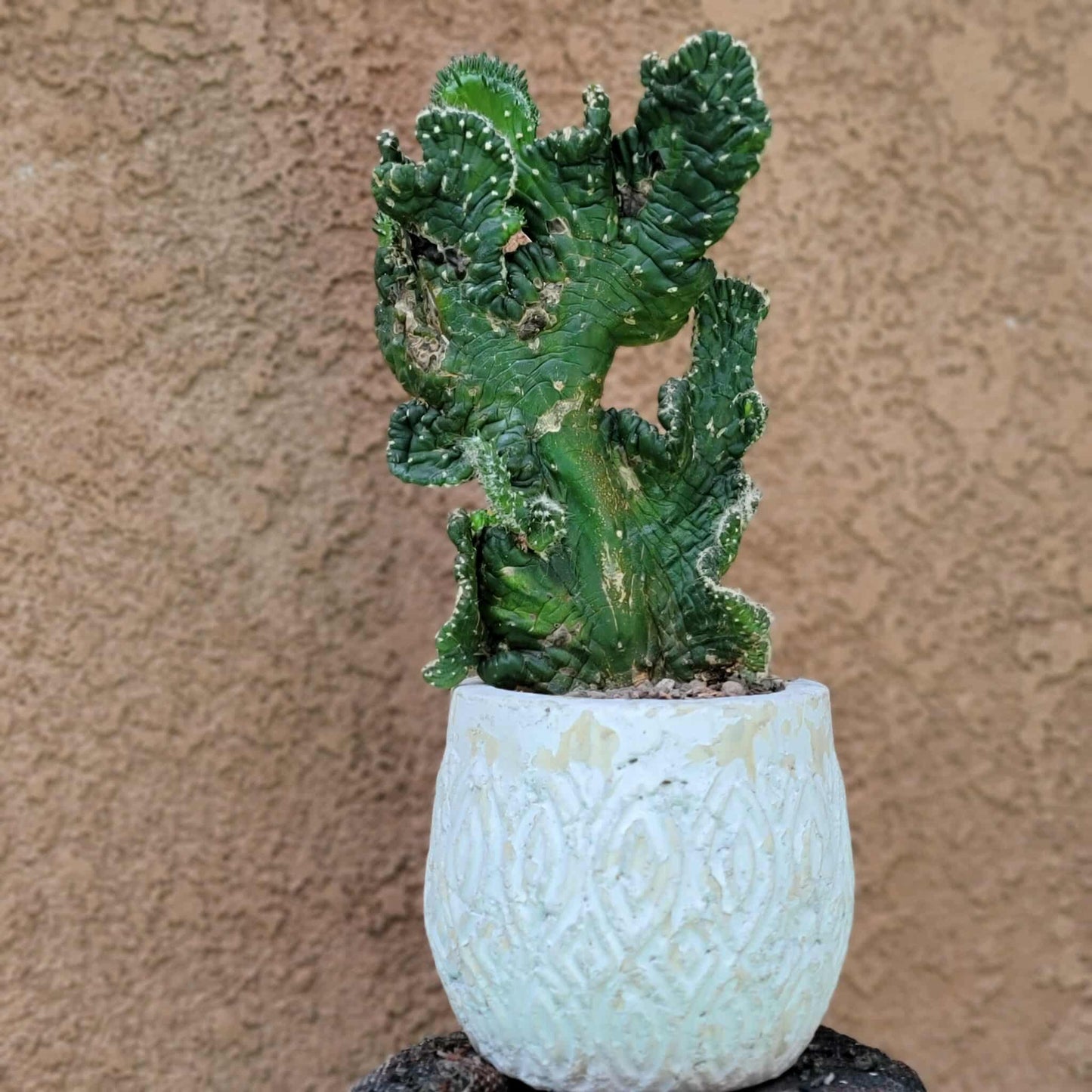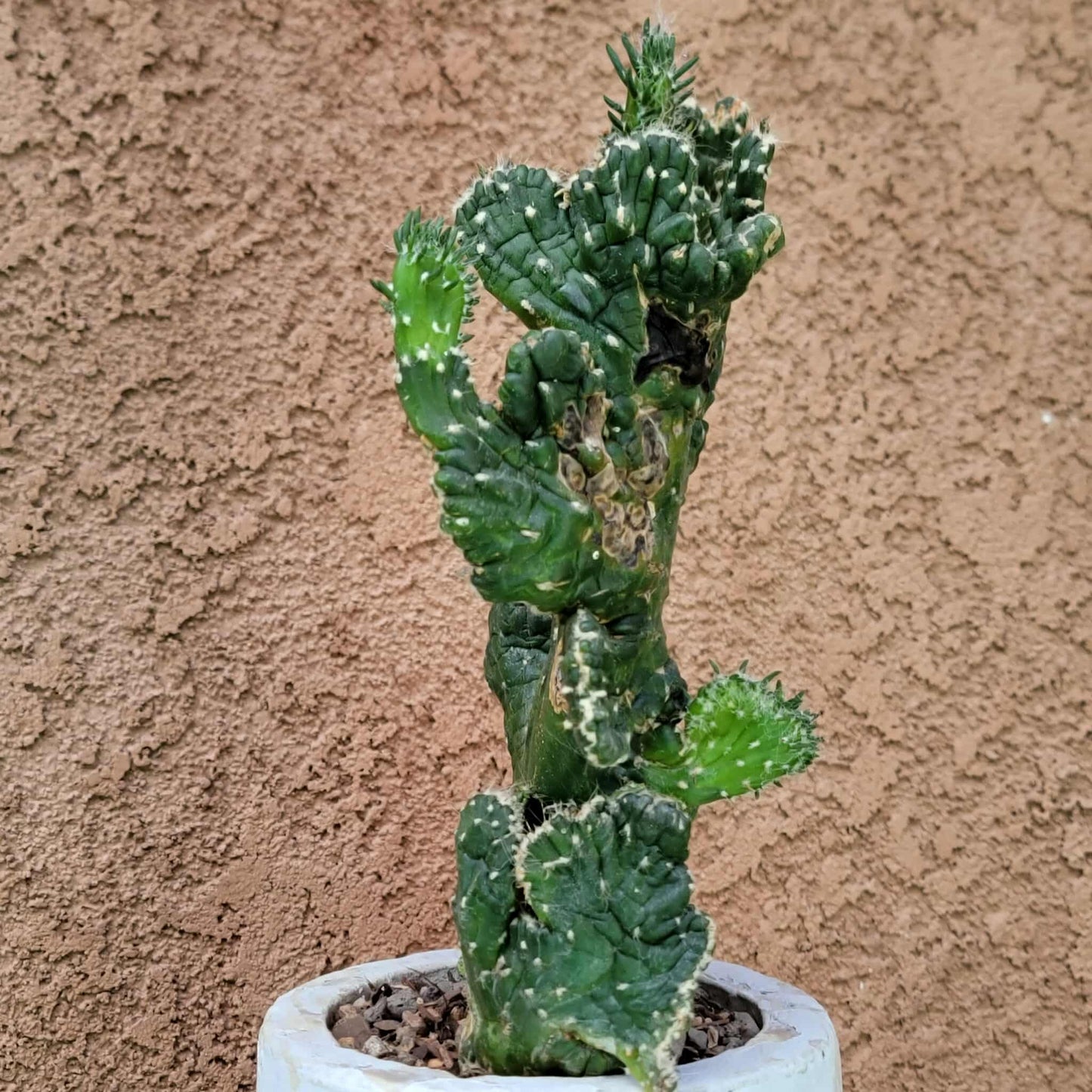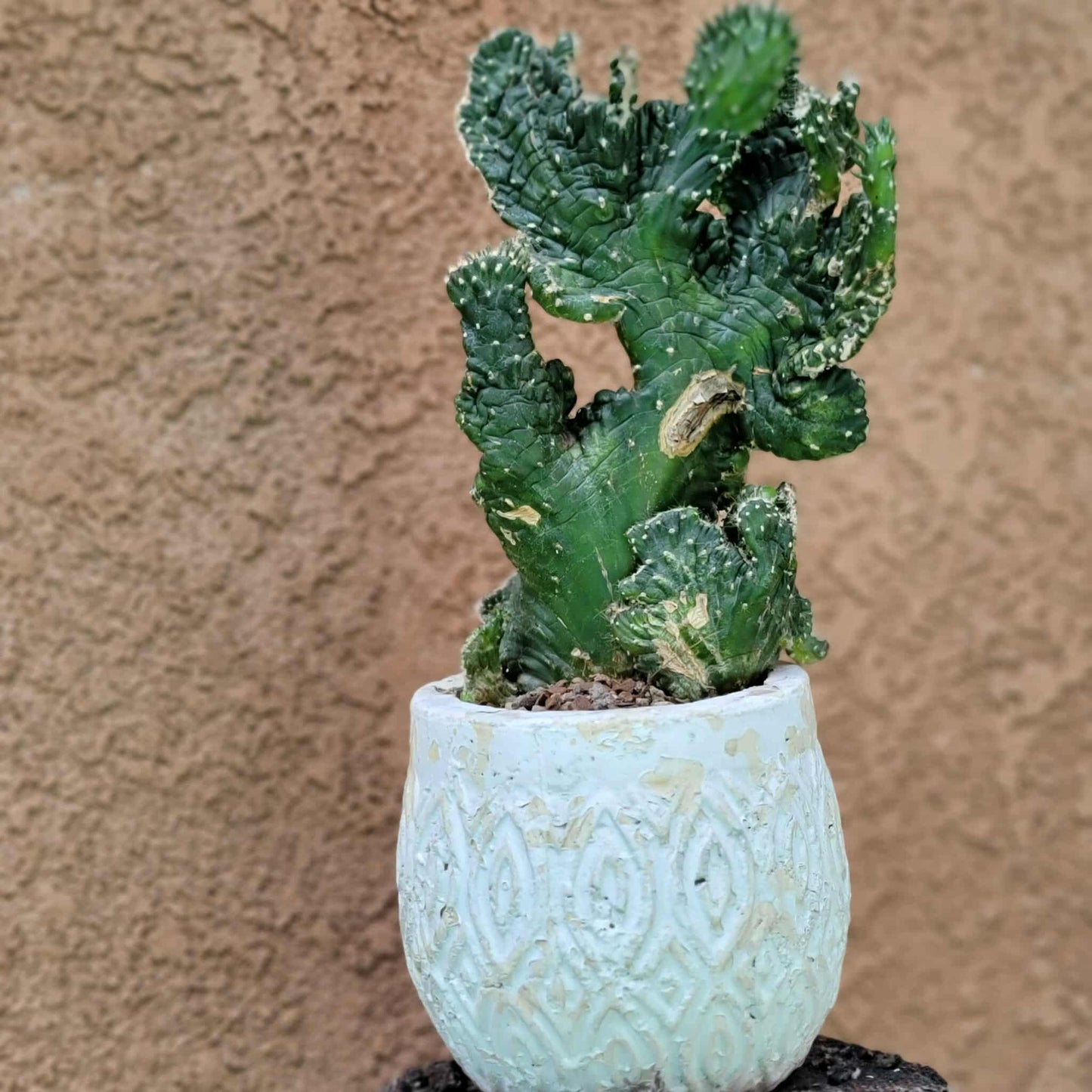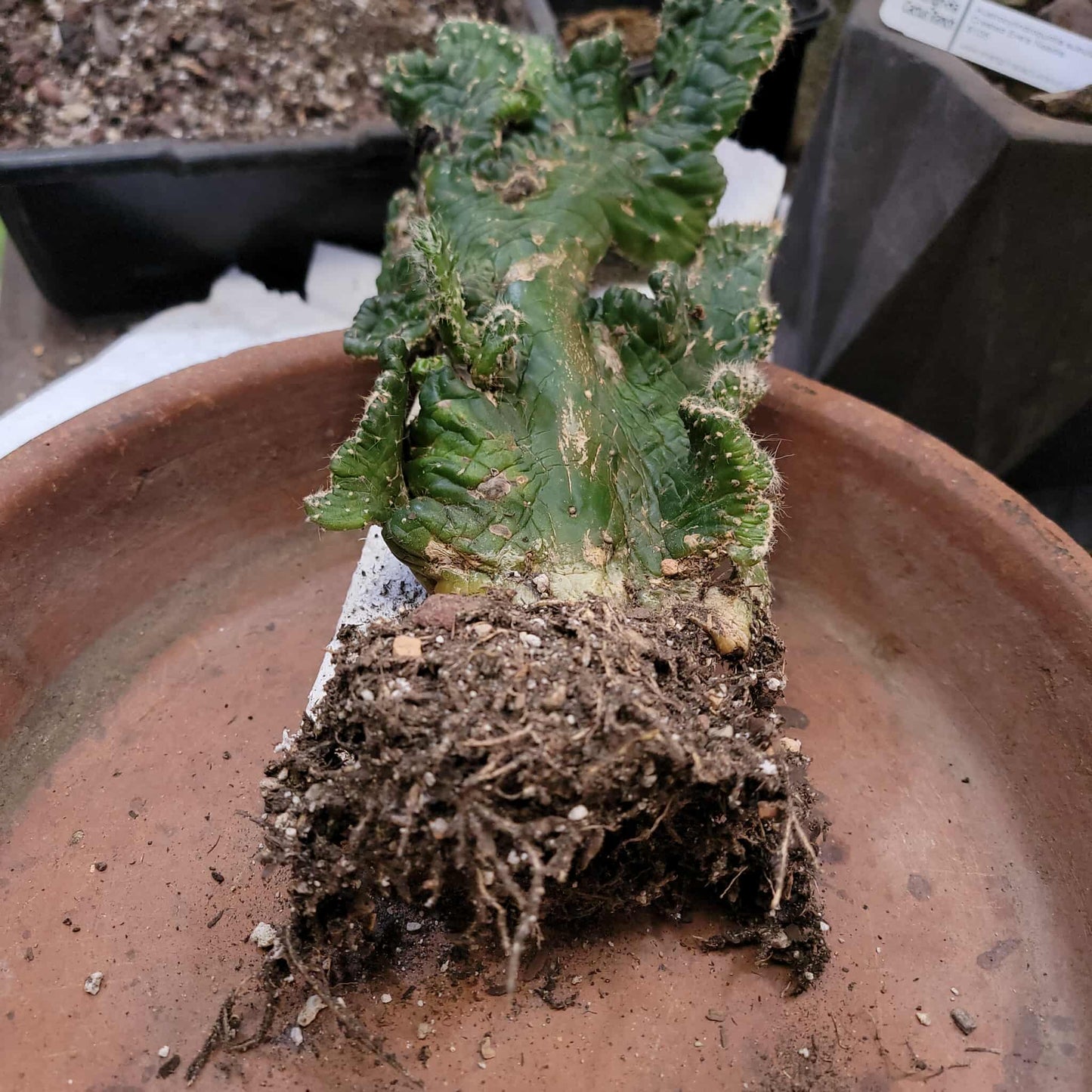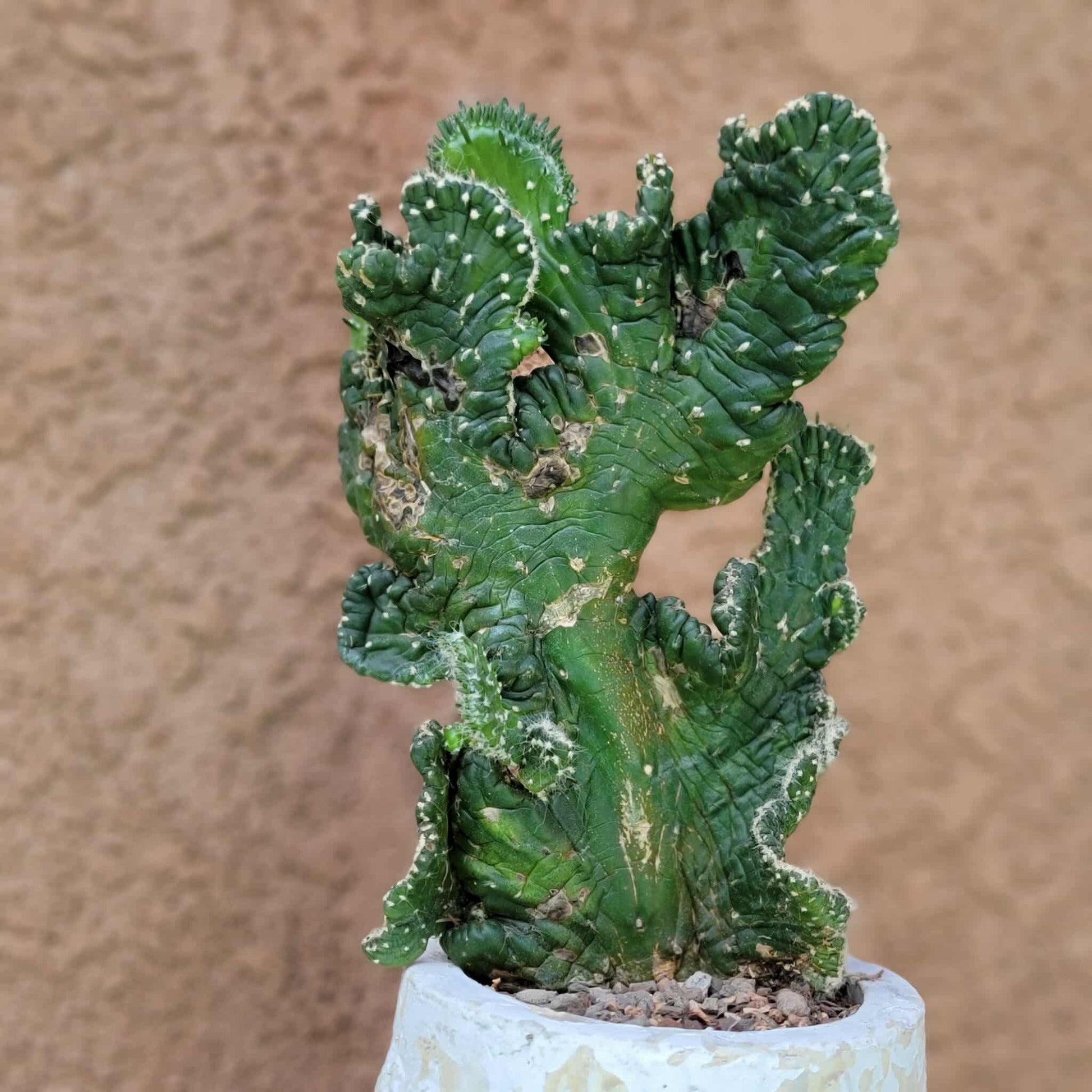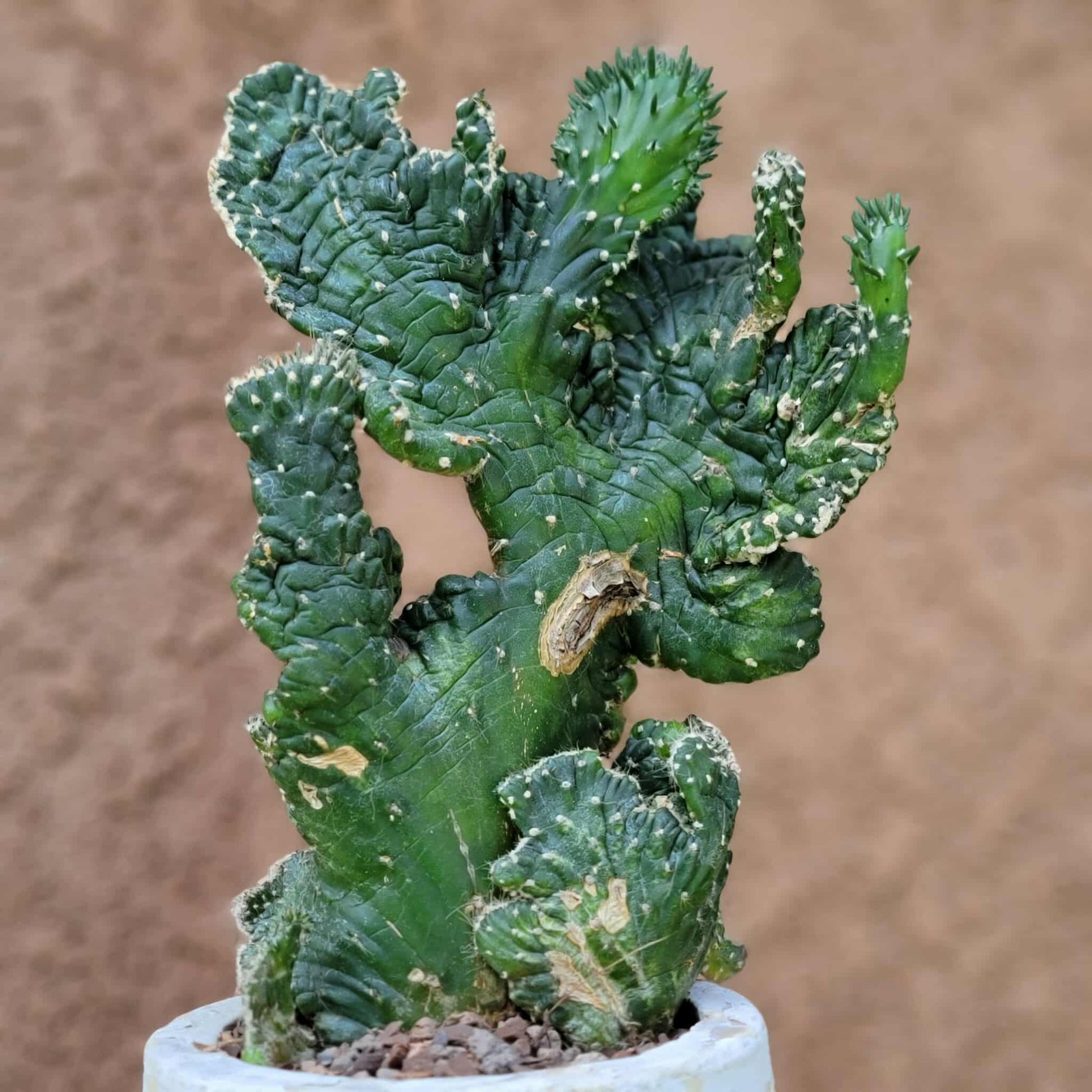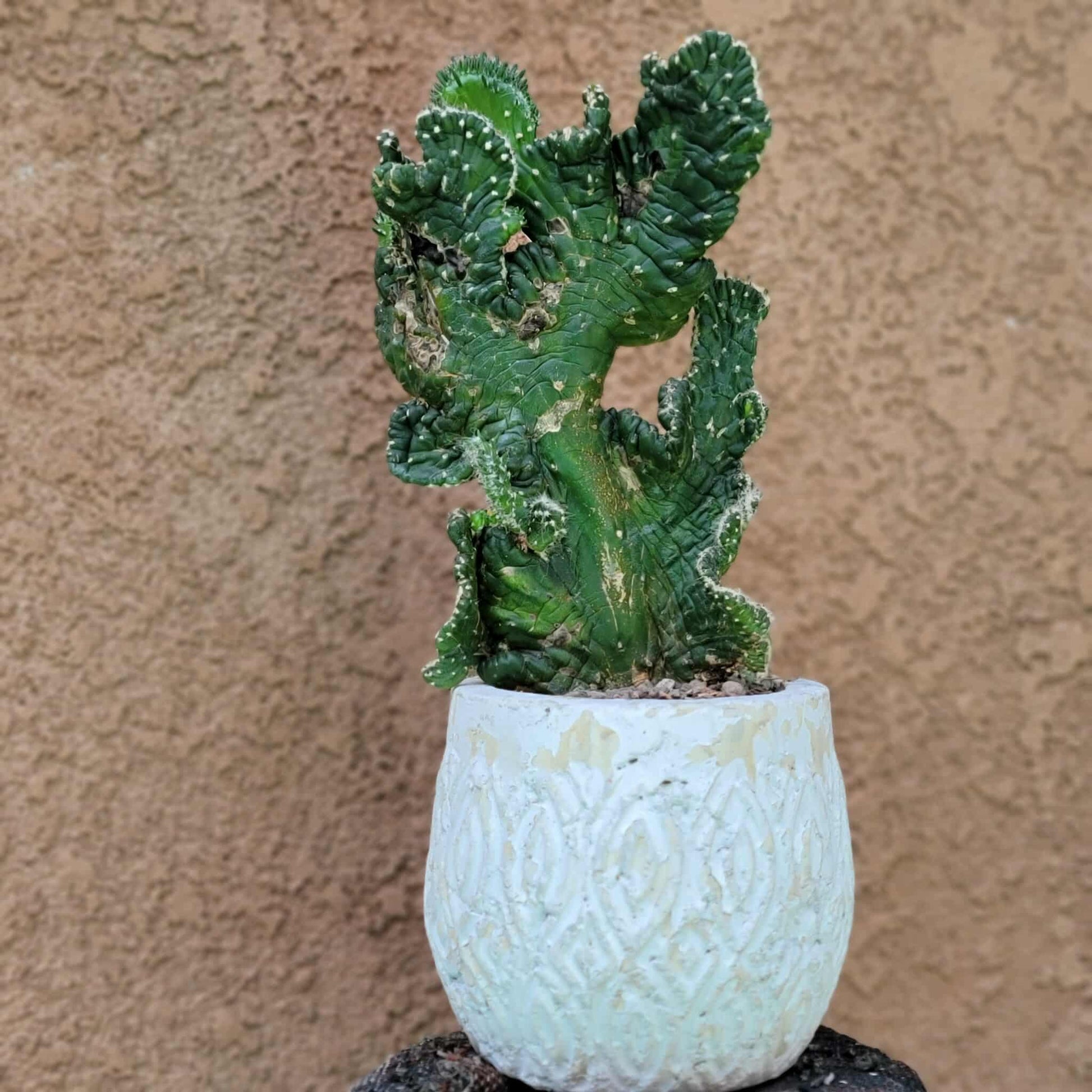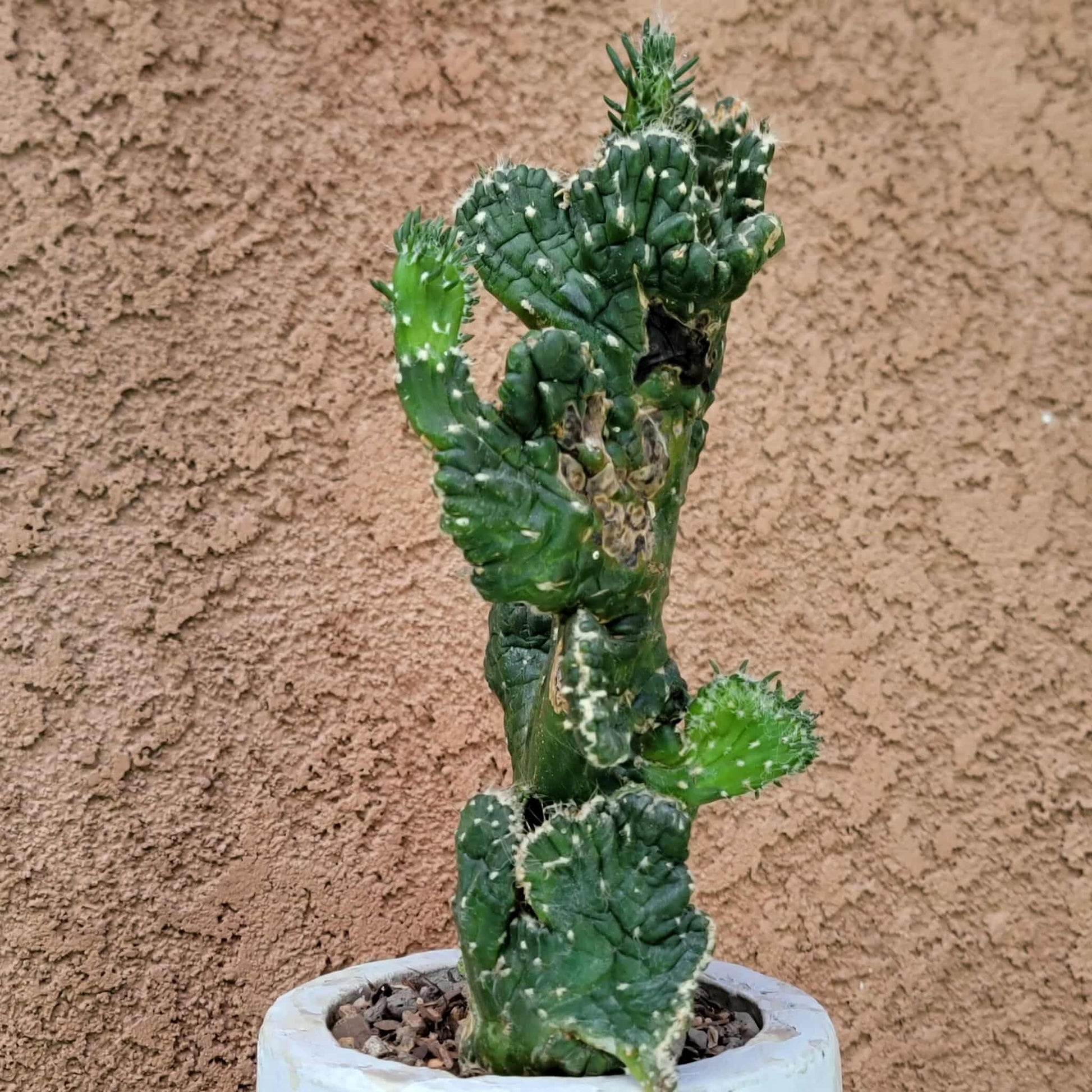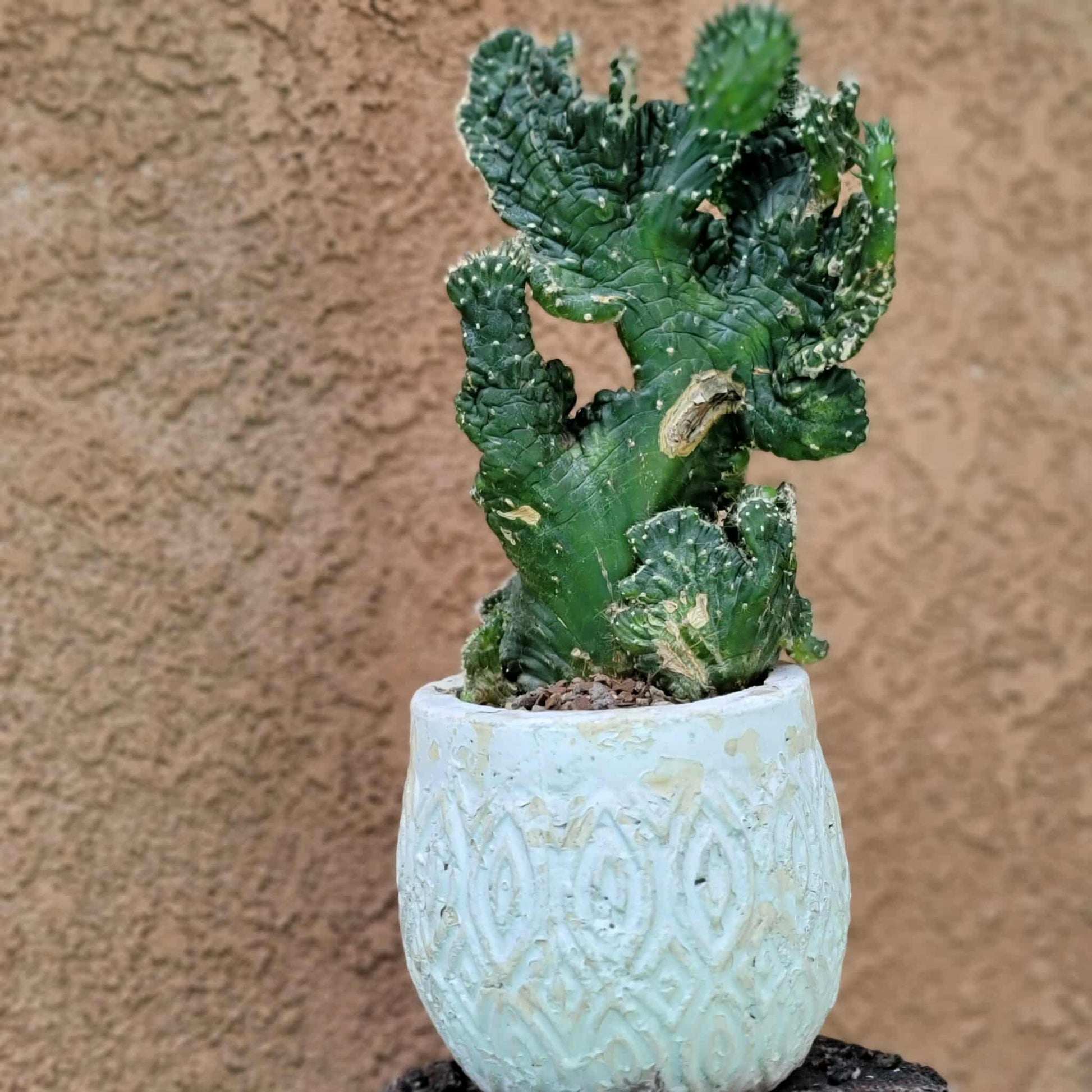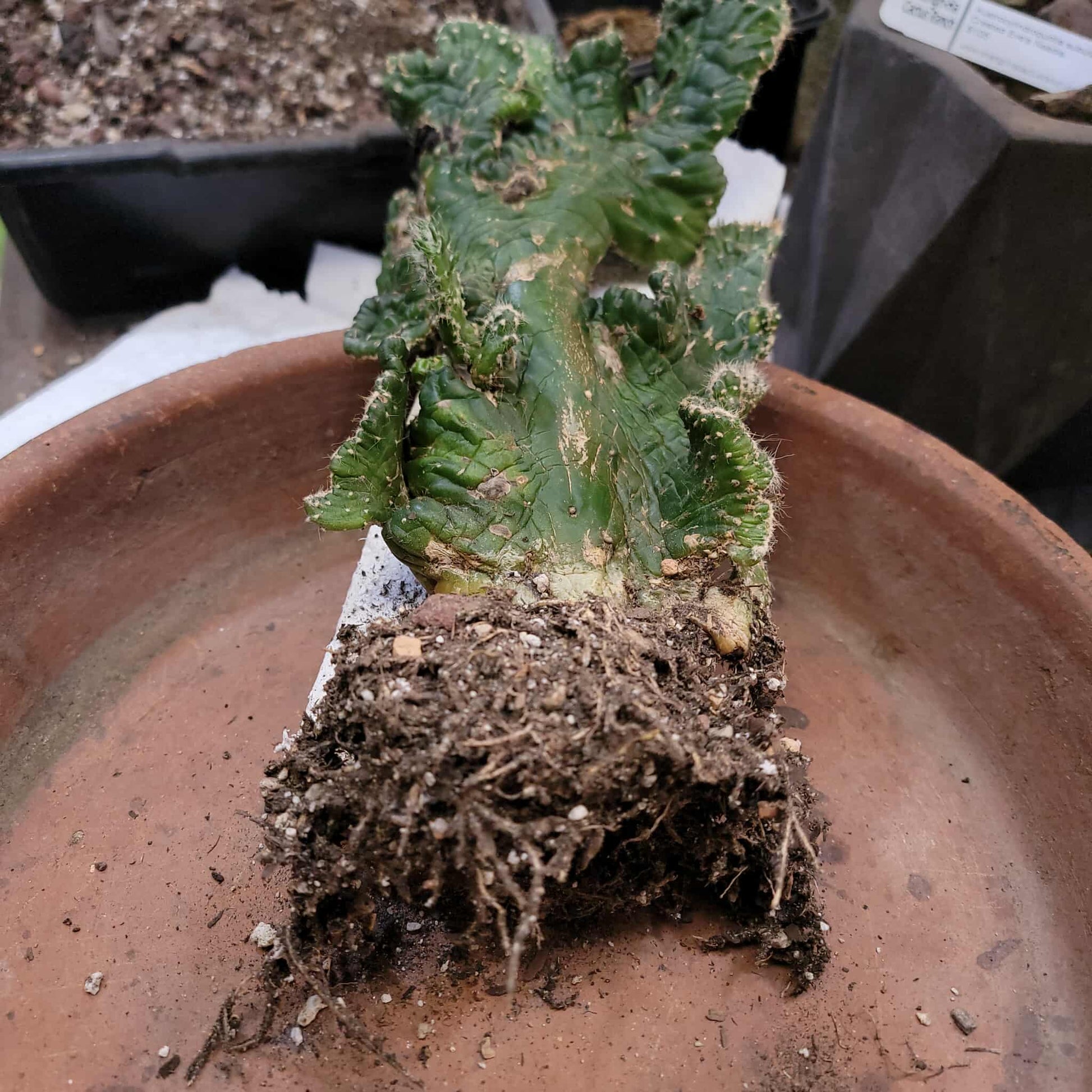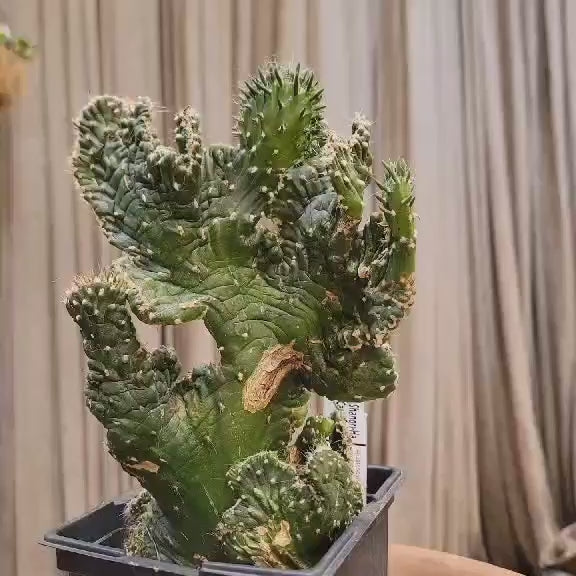Shangri-Ha Cactus Ranch
Austrocylindropuntia subulata cristata – Crested Eve's Needle
Austrocylindropuntia subulata cristata – Crested Eve's Needle
Couldn't load pickup availability
Austrocylindropuntia subulata cristata – Crested Eve's Needle
You will receive this exact, well-rooted specimen.
Measures 9" tall x 6” wide!
Roots as shown.
Showcased here in cement shabby chic planter (sold separately).
Will be shipped bare root.
Austrocylindropuntia subulata 'Cristata', commonly known as crested Eve's Needle, is a unique, crested form of the Eve's Needle cactus. A genetic mutation causes the cactus to grow in wavy, fan-shaped clusters instead of its typical cylindrical form. It is a striking and slow-growing succulent that is prized by collectors.
KEY FEATURES
· Appearance: The cactus is formed from broad, flattened, undulating stems. Along the top edge of the crest are rows of areoles (small bumps) with short, awl-shaped (pointed) leaves that resemble a mohawk or comb.
· Color: The crest is an emerald green, with the areoles occasionally bearing a few white spines.
· Growth: Crested Eve's Needle grows slowly and can reach 1–2 feet in height over time. Like many crested plants, it generally does not flower or produce fruit. Some plants may revert to their standard, non-crested growth habit, in which case the non-crested branches can be pruned.
· Origin: The species Austrocylindropuntia subulata is native to the high elevations of the Andes mountains in Ecuador and Peru.
CARE REQUIREMENTS
· Light: This cactus requires plenty of bright light, with full to partial sun being ideal. A south-facing windowsill is a great location for indoor plants.
· Watering: Use a "thorough yet infrequent" watering method. Allow the soil to dry out completely between waterings. Overwatering is a common cause of root rot in this plant.
· Soil: Use a very well-draining soil mix designed for cacti and succulents. Adding coarse sand, pumice, or perlite can improve drainage.
· Container: A clay pot is often recommended because it allows moisture to evaporate from the sides, helping the soil and roots to dry more quickly. A pot with good drainage is essential.
· Temperature: This variety prefers warm temperatures. While it can tolerate a light frost, it should be protected from freezing weather (below 40°F).
· Hardiness zones: The plant is hardy in USDA hardiness zones 9a through 10b.
TOXICITY
· The plant contains aloin, which can cause severe digestive issues and liver damage if ingested by humans.
· It is also toxic to pets, including cats and dogs, and can cause vomiting, diarrhea, and lethargy.
PROPAGATION
The most reliable method of propagation is by taking a stem cutting.
1. Cut: Take a clean cutting from a healthy stem.
2. Callus: Allow the cut end to dry and form a hard callus over a few days or up to a week. Callusing should be done out of direct sun.
